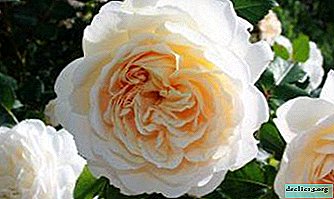Names, descriptions and photos of cactus species. Features of the family and rules for the care of plants at home
 Cactus is a perennial plant native to America, which is currently known throughout the world. Cacti have won the hearts of many home growers and collectors, but not everyone is able to figure out the extremely rich variety of species of this amazing representative of the desert flora. From the article you will learn what species are and what they are called in Russian, as well as study photos of plants.
Cactus is a perennial plant native to America, which is currently known throughout the world. Cacti have won the hearts of many home growers and collectors, but not everyone is able to figure out the extremely rich variety of species of this amazing representative of the desert flora. From the article you will learn what species are and what they are called in Russian, as well as study photos of plants.
Family
The Cactaceae family is a perennial dicotyledonous flowering plant adapted to grow in arid climatic conditions. The family unites 150 genera, which include over 3000 species.In nature, the plant is distributed mainly in its homeland - in South and North America, also found on about. Madagascar, in Africa, Australia, India and the Mediterranean countries.
Cacti are divided into 4 subfamilies:
- cactus;
- pereskievye;
- prickly pear;
- mauhyenivye.
The article contains brief descriptions of the appearance of almost all varieties of the family - leafy, round, with long needles and the rarest and unusual varieties of representatives of the Cactus family that can be kept in the house, their photos, the names of indoor and outdoor plants in Russian and Latin, as well as tips for caring for decorative flowers at home.
What are the varieties?
Pereskia (Pereskia) - with long leaves

Pereskia - one of the oldest cacti, originally from South America. In nature, there are about 20 species. Outwardly unlike other Cactus, they are represented mainly by shrubs or undersized trees.
The stem is covered with thorns, which they cling to tree trunks (and about colored cacti with stems and thorns of different colors can be found here). The leaves are long (3-25 cm), having an ordinary oval or ovoid shape, saturated green color.
The leathery cactus leaf plate is capable of storing moisture, and is covered with a shiny protective skin.Pereskia is characterized by rapid annual growth - up to 20 cm per year. The plant can reach a length of up to 10 meters. In the summer, the plant is covered with flowers of various colors: white with yellow stamens, pink, orange, red - in the place of which the fruits are formed (we talked about cacti with red flowers in this material, and pink cacti can be found here).
The most popular species is Pereskia prickly.
The genus is named after the botanist NK Fabri de Peiresca. The plant has unofficial names: "leaf cactus" and "cactus rose."
We offer you to watch a video about Pereskia cactus:
Hylocereus - drooping

Hilocereus - creeper or creeper creeperwhose stems hang down to the ground. There are 25 species in the genus. The birthplace of the plant is Central America, currently the species is widely distributed in tropical and subtropical zones.
The stems of the plant are wide and spreading, the bush reaches a height of up to 3 meters. Bunches of soft spines are formed on the edges of the stems (are there cacti without spines?).
At the age of 2-3 years, the plant produces fragrant flowers: white, milky, yellowish or purple.In agriculture, several types of plants are grown under the general name pitahaya, a fruit fruit known as the dragon heart. The flesh of the fruit is red or white, the taste of which resembles kiwi and strawberries.
We offer you to watch a video about the cactus Hilocereus:
Mammillāria

One of the most evolutionarily advanced largest genera of the family, which includes about 185 species (including hybrids of about 1000). Mammillaria Homeland Mexico and South North America. A distinctive feature of the plant are the papillae (lat mammilla - "nipple") on the stem, from which small hairy spines grow.
Sometimes papillae or tubercles of a cactus are arranged in a spiral or in the form of horizontal rings.The plant has a small size, spherical or short-cylindrical shape (here we talked in detail about different small cacti). Flowering plants are plentiful and beautiful. A corolla of small flowers forms on cylindrical stems, and spherical ones can be completely covered with buds. The flowers are tubular or bell-shaped of various shades in the spectrum from white to scarlet. Along with flowering, some species meet fruitsfit for food.
Popular varieties are Wild, Zeileman, Blossfeld, Baum.
We offer you to watch a video about the Mammillaria cactus:
Epiphyllum

Epiphyllum - an epiphytic cactus that includes 20 species. Habitat - from Central America to Mexico. Epiphyllum is one of the most popular cacti in home gardening.
This genus is distinguished by the presence of long branched stems that can be mistaken for leaves. Funnel-shaped flowers are capable of reaching large sizes (up to 40 cm) - mostly white, but cream, yellow, pink and red are also found. When the buds fade, large edible fruits with a banana-strawberry flavor are tied in their place.
The plant was discovered in 1812 by Adrian Haworth and got its name from the combination of the Greek words epis - "on" and fillum - "leaf".Hatiora (Hatiora)

Perennial epiphytic cactus growing on tree trunks in the tropical forests of Brazil or in crevices of rocks. According to different classifications, it numbers from 5 to 10 types of haators.
Has thin stems, consisting of segments (segments), no more than 3 cm long. Some types of haators grow to 1 m. The flowers are large, of various colors, appear on the tops of the stems. In place of flowers at the end of summer, yellow or white berries form.
We offer you to watch a video about Hachior's cactus:
Opuntia (Opuntia)

Covered with seed or flower succulent native to Mexico. It is characterized by a large variety of species (about 200). It is characterized by frost resistance, therefore it has spread to almost all corners of the world. Most species have flat oblong stalks-segments, on the surface of which are buds with spines and glochidia (small sharp spines that gather in bundles around the areoles).
On prickly pears, a large number of needles grow, which are dangerous for both people and animals.From the buds, flowers are formed - yellow or red, which are subsequently converted into edible berry-like fruits. The fruits of prickly pears are actively eaten, and the stems go to feed livestock.
Cereus (Céreus - "wax candle")

Giant cactus, common in Central and South America. Its growth can reach 20 m. Cereus is not only a giant, but also a long-liver - its growing season can be 300 years. The genus has about 50 species. The plant is adapted to an arid climate, and is capable of doing without water for a long time.
The plant has a branched stem of a cylindrical shape, covered with many thorns. In May-June, flowers appear on the sides of the stems (white or pinkish), blooming only at night.We suggest watching a video about the Cereus cactus:
Ariocarpus (Ariocarpus)

Succulent plant with low, slightly flattened shoots of brown or gray-green hue. Ariocarpus grows in Mexico and the neighboring Texas state.prefers rocky and calcareous soil. The genus is not numerous - 10 species.
A low view, covered with papillae with pointed edges, at the ends of which there is a rudimentary spine. Bell-shaped white, pink, red or yellow flowers appear next to the growth point, giving way to fleshy, rounded or oblong fruits containing seeds.
Aylostera (Aylostera)

Beautiful flowering cactus, numbering from 10 to 30 species of plants. Some scholars are referred to the Rebucius family (read more about rebuts in our material). The homeland of Ailoster - the highlands of Bolivia and Argentina. The plant grows at an altitude of over 3,000 meters above sea level. It has an ovoid or cylindrical shape and small size (up to 6 cm in diameter). The stalk is ribbed and many children are usually formed on it. Whitish spines protrude from the areoles.
The name of the cactus is formed by the merger of two Greek words: aylos - "tube" and stereos - "solid".With long needles
Echinocactus (Echinocactus - "hedgehog")

Cactus, having the shape of a ball - in young plants, the diameter is equal to the height, with age the plant takes an elongated shape. Echinocactus is widespread in the desert areas of Mexico and the United States (for species of cacti that grow in deserts, read here).
The average height of the plant is 1.5 m, the maximum is 3 m. It has numerous ribs densely covered with thorns. Tubular flowers appear at the apex and often gather in a wreath. Echinocactus is a true long-liver, specimens of about 500 years old are recorded, with a mass of 1 ton.
The most popular species is Gruzoni.
We offer you to watch a video about Echinocactus Gruzoni:
Lobivia ferox (Lobivia ferox)

The closest relative of Echinopsis (some scientists do not distinguish Lobivia as a separate genus). Has 70-100 species of Lobivia, grows in Peru, Argentina and Bolivia. The stem in shape resembles Echinocactus, but the lobivia is smaller and has large needles.
Over time, Lobivia has a lot of root children. The main stem produces several lateral columnar stems, on which spectacular flowers from white to bright raspberry flaunt in the summer.Black-throated Mammillaria (Mammillaria melanocentra)

The species grows only in Mexico and settles in crevices. It has a spherical shape with an average diameter of 20 cm. The stem is abundantly covered with thorns: the lower ones are thicker and longer (2 cm), the upper ones are shorter (0.5 cm). The central spine has the shape of an awl and rises 5-6 cm above the apex. During flowering, pink flowers encircle the top of the cactus with a garland.
Mammillaria more information can be found here.
Round
Ferocactus (Ferocactus)

A genus that grows in North America and combines about 30 species. Most often spherical large specimens of ferocactus are found - up to 1 m in diameter, with straight thick ribs on the stem. Flowers appear at the apex only in adult plants.
Collectors highly value species with long and multi-colored spines (red or yellow), for example: a cylindrical ferocactus (or a "damn needle bar") and wide-needle (or "damn tongue").You can read more about ferocactus here.
Parody (Cactaceae Parodia)

It has a second name eriocactus, it includes about 50 species. It is found in nature in the mountainous regions of Latin America. All species are characterized by the shape of a ball or cylinder. The stalk is low with distinct ribs, on which tubercles with areoles are located. From each areola grows up to 5 long spines (4 cm) and from 10 to 40 short spines (up to 1.5 cm).
Received the name Parody in honor of the Paraguayan botanist L.R. Parody.Gymnocalycium (Gymnocalycium - gymnos - "cup" and calycium - "naked")

Gymnocalycium - a spherical flattened cactus of South American origin. Combines 50-80 species. Diameter 4-15 cm, height 2 times less. It features long flowering - from May to September. Widely distributed in home floriculture.
Notocactus (Notocactus)

Slow-growing spherical succulents, numbering up to 20 species, are currently classified as the Parody. In the natural environment grows in mountainous terrain.
The most popular species is the winter-hardy Notocactus Otto, with a yellow or red large flower resembling a gerbera.You can find out about notocactus here, but read more about the species of this plant in this material.
Rare
Lepismium (Lepismium - "scale")

Lepismium - epiphytic forest cactus, including 10 species. Grows in tropical forests and has long drooping stems. On deeply planted areoles there are scales that were rudimentary leaves. Flowers are located at the ends of the stems and appear in late spring. Often used to decorate the interior.
Echinofossulocactus (Echinofossulocactus)

A genus of spherical cactus, including only 2 species found in Mexico. The stem is 10 cm in diameter. Areoles are located radially and from them bent yellow or brown spines of different sizes grow. Bell-shaped flowers are lilac with a white whisk.
Euclichnia (Eulychnia - "beautiful lamp")

Column-shaped cactus, numbering 5 species, grows on the coasts of Peru and Chile. It is distinguished from other species by abundant felt or fleecy pubescence on the ribs, around the areola (we talked about the variety of fluffy cacti here). Cactus gives sour "copao" fruits that eat food in the places where the plant grows.
Haageocereus

Columnar cactus growing in the hilly and rocky terrain of Peru and Chile. The genus includes 20 species. It has a fairly high erect stem with distinct ribs. Some species take on a canine-like shape. It produces funnel-shaped flowers of white or pink color, in place of which fruits appear covered with hairs and scales.
Hildewintera

Includes about 50 species, mainly grows in Uruguay. It has creeping long stems covered with corymbose spines. Blooms in large red or orange flowers. Winter’s most popular species is nicknamed the “monkey tail,” for its resemblance to the animal’s furry tail.
Neoporteria (Neoporteria)

The genus Neoporteria unites about 25 species. Small spherical cacti with a single stalk, eventually acquiring a cylindrical shape (which cacti are large?). Covered with red or brown long needles. It blooms each year with a large number of funnel-shaped cream, pink or red flowers.
Oreocereus

Columnar or branched cactus growing in the Andes. It can grow up to 8-10 meters. It is distinguished by the presence of not only thorns, but also thin hairs surrounding the stalk with cobwebs.
Pylosocereus (Pilosocereus)

It grows in America and has about 60 species. The stem is green with a bluish tint, grows up to 10 m. The plant is also called the "hairy cactus", since a number of species covers dense fluff. It features spectacular flowering with large white or pink flowers that appear anywhere on the stem.
Setiechinopsis (Setiechinopsis)

Cactus has a single species - Mirabilis, common in eastern Argentina. The stems are cylindrical brown-green, not more than 15 cm in height. During flowering, it releases a long tube on which a beautiful white flower appears.
Stetsonia

Monovid Stetsonium club-shaped - a giant columnar cactus (up to 8 m), growing in Bolivia and Argentina. The stem is bluish-green with 9 blunt ribs; sharp spikes stick out from white felt areoles. Blooms rarely in huge white flowers.
Lemerocereus (Lemaireocereus)

Includes 6 species native to South America. In nature, it can reach gigantic sizes (up to 15 m). Treelike or shrubby cacti with distinct, distinct ribs on the stem. Thin, brittle spines border the protrusions of the ribs.
General care rules
When leaving, you need to create conditions close to the natural habitat:
- Create mandatory differences in day and night temperatures and changing seasons.
- To limit desert cacti to watering, forest, on the contrary, to provide plentiful watering.
- Provide good lighting.
- Provide fresh air to the roots.
- Choose the right soil and drainage.
We offer you to watch a video about the general rules for the care of cacti at home:
Conclusion
Cactus is a fairly unpretentious plant, but when grown at home, it is quite difficult to achieve flowering and fruiting in most species. Cactus is used not only as an ornamental plant, but is also actively eaten throughout the Americas and in tropical countries and goes to feed livestock.

















